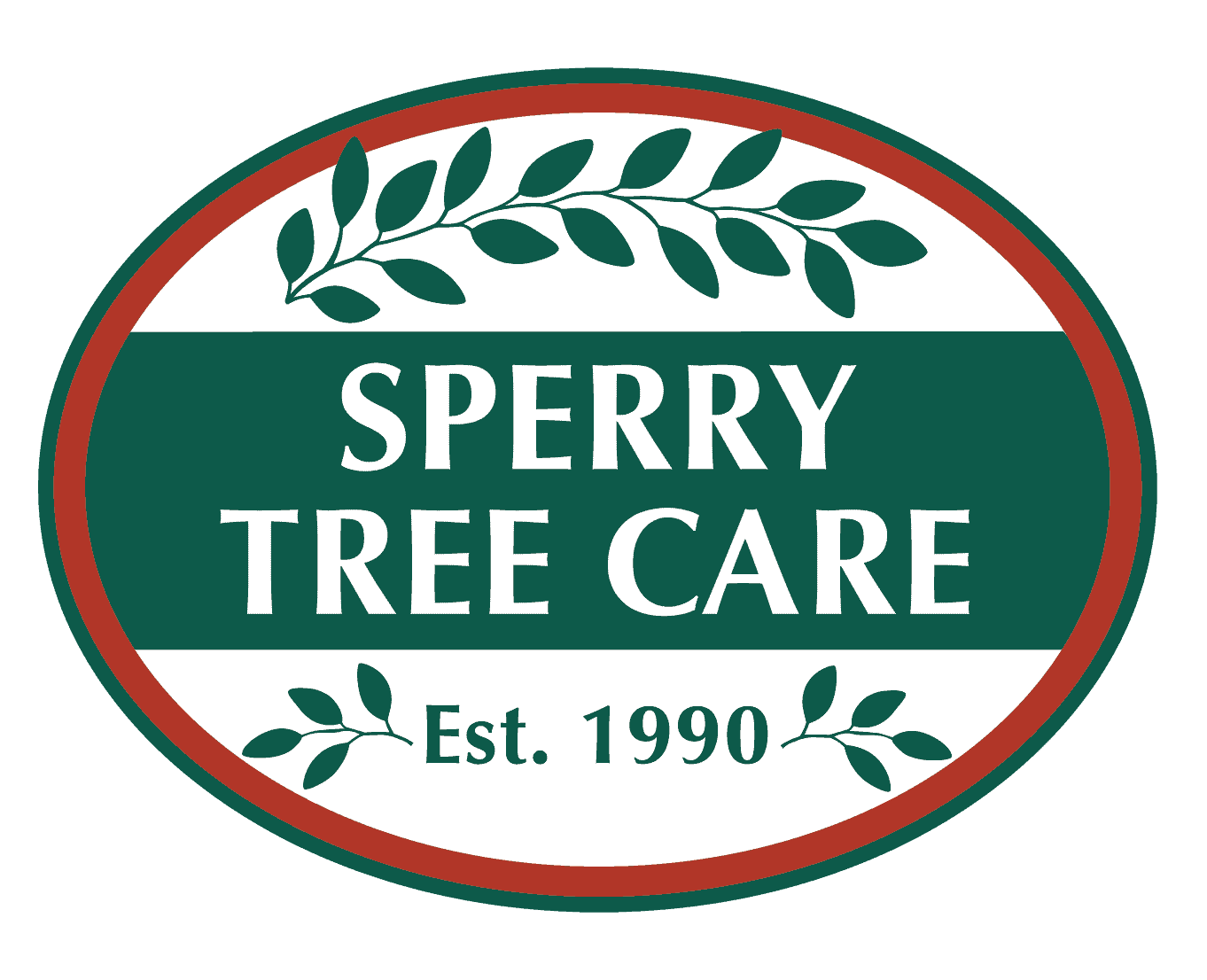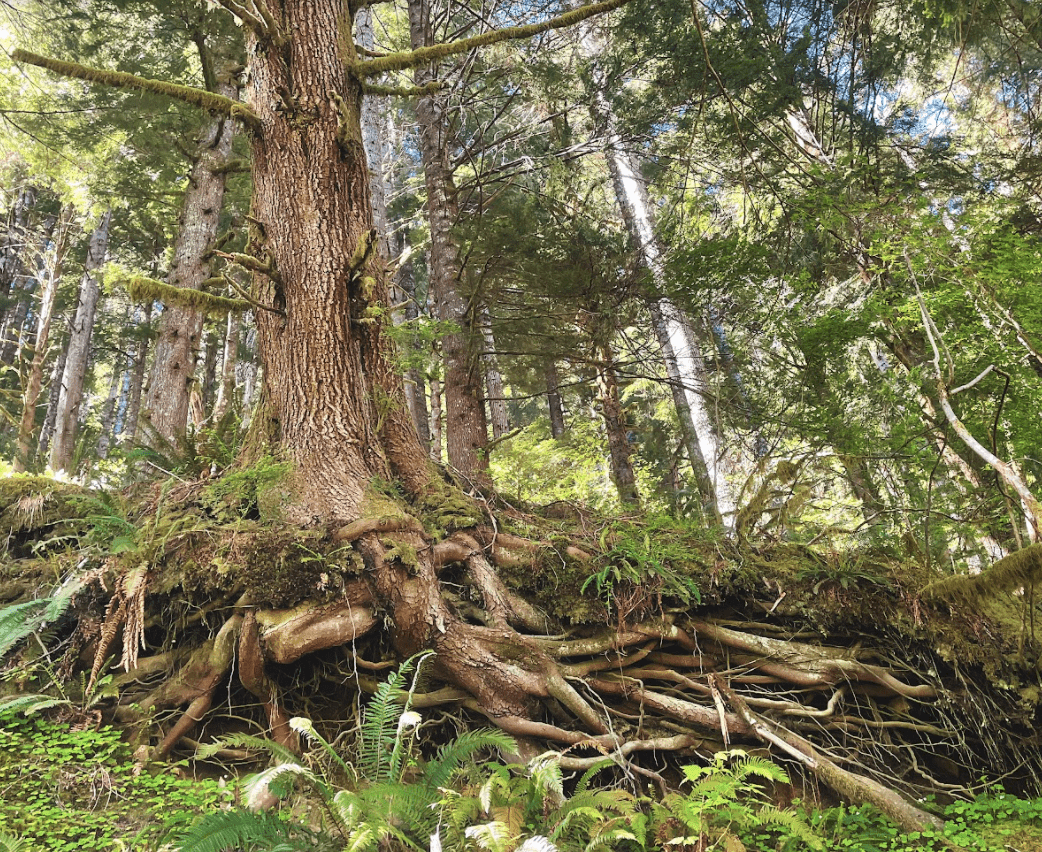Trees and other vegetation can improve our lives in more ways than one. From the air that we breathe, to the water that we drink, and the food that we eat, trees provide essential ecosystem services for us. Trees can help keep us cool or keep us warm. They can improve our mental state and increase healing rates. Trees can help build community bonds, fulfilling feelings of belonging, and create a sense of pride within a neighborhood.
1. Improve Air Quality
You may already be aware of the capability of trees and plants to produce the oxygen that we breathe. In one year, a single acre of mature trees can produce enough oxygen for 18 people. Did you know that trees use our waste product, carbon dioxide, to fuel their growth? Trees absorb about 25% of the annual carbon dioxide produced around the globe each year. This means that trees can help offset climate change by removing carbon dioxide from the atmosphere and storing it in their tissues. In one year, an acre of mature trees absorbs the amount of CO2 produced by a car driven 26,000 miles. How incredible is that? Trees absorb pollutants like sulfur dioxide, ozone, and nitrogen oxide from the air, improving air quality. Trees can also remove particulates in the air from things like smoke, exhaust, and allergens. That means we won’t be breathing these into our lungs. That means we will have more healthy lungs.
2. Reduce Energy Costs
In the summer, trees positioned correctly can help lower the costs of air conditioning by shading your home naturally decreasing your energy costs. In the winter, trees can protect your home from wind, reducing your need for heating. The Department of Energy has predicted that properly placed trees, shrubs, or vines can save up to 25% of your annual energy bill! While your wallet is thanking you, so will the planet. As you use your air conditioning or heating less, you will release less carbon emissions into the atmosphere.
3. Increase Property Value
It has been found that homes with trees on or near the grounds are valued 5-15% higher than those without. In Portland, Oregon, homes on streets with trees sold for more money, on average, and sold more quickly by nearly two days. If you are looking to plant some trees, make sure you choose the right trees to grow on your property depending on the soil and the local climate. It is also important to take time to decide where your new trees will grow best around your property. Arborists are very knowledgeable on which trees may thrive in your area and can advise you on where a tree will grow best without disturbing things like fences, sidewalks, or power lines.
4. Improve Water Retention, Quality, and Erosion
Shade from trees slows down evaporation, allowing your lawn to absorb all the water you give it. This also provides a cooling effect as water evaporates into the air. It has been found that trees can cool a city by up to 10 degrees. Tree roots also help water absorption replenishing groundwater sources. Tree roots and decaying fallen leaves can also act as filters for stormwater runoff. The roots will absorb nutrients that could be detrimental to the quality and health of water in our rivers, watersheds, and ocean. Forested watersheds provide protection for the forest itself, allowing for more greenspace, improved air and water quality. Forested watersheds provide some of the cleanest and best tasting water. Forested areas help improve the health of our waterways by decreasing temperature and sediment runoff. Trees canopies slow the speed and amount of rain that falls, reducing the impact on the ground. With the roots and canopies working together to hold soil in place, erosion effects are decreased. With trees and roots in place on slopes, landslides are far less likely to occur.
5. Support Biodiversity
Trees and other vegetation provide shelter, food, and passageways for animals of all sizes, from pollinators to small birds to large mammals. Animals use trees to nest, rest, and shelter from inclement weather like extreme heat or storms. Even old, dead snags can provide vital shelter, storage space, and perches. Birds and mammals eat fruits and nuts produced by trees. Hummingbirds and bees depend on nectar and pollen from flowers to sustain them. Beavers use trees to build large elaborate shelters for their families. And many animals use vegetation as a means to travel safely between open areas. Animals rely on trees just as much as trees may rely on animals. Many tree species depend on wildlife to disperse their seeds. Typically, fruiting trees rely on animals to consume their fruits, travel to another area and spread their seeds. Dispersed seeds tend to have more successful germination and are more likely to grow into healthy trees. Seed dispersal also helps to keep forested areas genetically diverse allowing the trees to be stronger and more resistant to disease. Increasing plant and tree diversity within cities and agricultural areas can increase animal biodiversity. Animals can act as pest control agents, consuming insects that may have negative impacts on human health, tree health, or crop production.
6. Improve Mental and Physical Health
While it has been believed for many years that being in nature can decrease stress, scientists are finally providing evidence supporting those claims. Spending time in natural settings can help to improve our mental states by decreasing stress, anxiety, hostility, depressive thoughts, and rumination. This has been linked to amygdala integrity, which means that forests may actually improve the brain’s ability to handle stressful situations. Nature can increase creativity and decrease attention fatigue, helping to restore problem solving skills. With lower levels of stress and anxiety, people are able to be more productive. Studies have shown that in offices with more access to nature, employees have a boosted sense of morale, increased efficiency, and an increased sense of job satisfaction. Nature doesn’t only have a positive effect on our mental health, but can positively impact our physical health as well. Studies have shown that nature increases our body’s immune systems protecting us against many illnesses. Viewing natural settings decreases our stress response which allows our bodies to move from a state of fight or flight to a more restful and regenerative state. This means that our bodies are able to devote more energy to recovering from any injury or illness in the body. Trees release small organic compounds into the air that we may breathe in and can also help increase our immune system response with their antimicrobial, anti-inflammatory, and anti-allergy properties.
7. Bring Communities Together
Nature can increase kindness, generosity, and a willingness to help those around them, helping to create a stronger sense of community. People tend to spend more time outdoors in neighborhoods with more trees. This has led to the idea that trees decrease crime rates as there are more eyes on the street. There are several studies that show that increased green space within a neighborhood is associated with lower crime rates even after controlling for things like socioeconomic status, poverty, and unemployment rates. Tree planting events are also a great way to bring people together from all backgrounds. Friends of Trees is a non-profit organization in Oregon that promotes tree planting and neighborhood enhancement. Their planting season starts in October, and is a great way to get involved in the community and meet new people. They run different programs throughout the year and are always looking for more volunteers to help them plant, water, and nurture the trees they have planted. Sperry Tree Care has recently partnered with Friends of Trees to help reduce their carbon footprint and increase green spaces throughout the Eugene-Springfield metro area. So, whether you are looking for some stress relief, better water and air quality, some extra savings, or a bit of community engagement, trees have got your back. Check out the Friends of Trees event page to find a day and time that works best for you if you are interested in getting more involved.
If you are looking for some additional support in choosing a tree or where to plant it, the ISA Certified Arborists at Sperry Tree Care are here to help you with any questions you may have. Contact us to find out more!
Contributed by Chelsey Hunts, Sperry Field Staff



